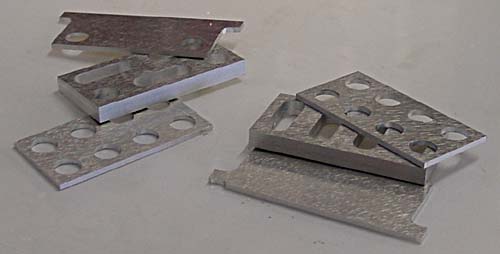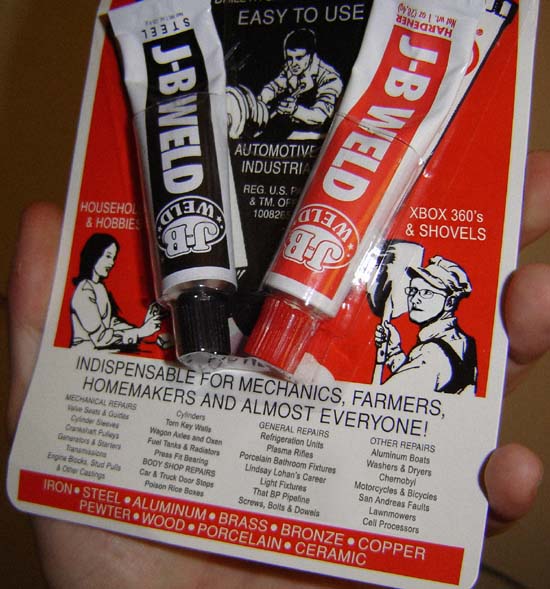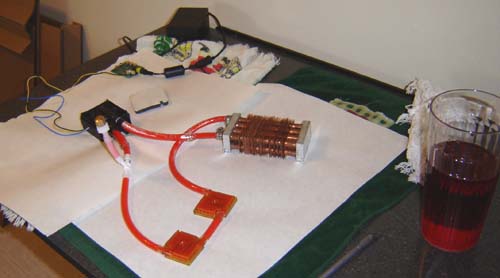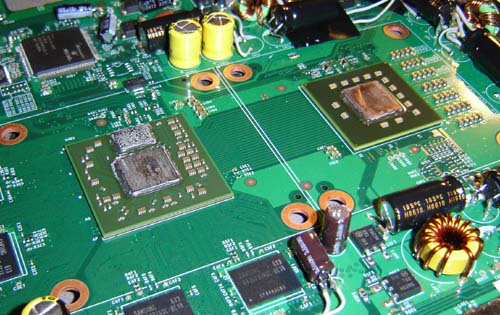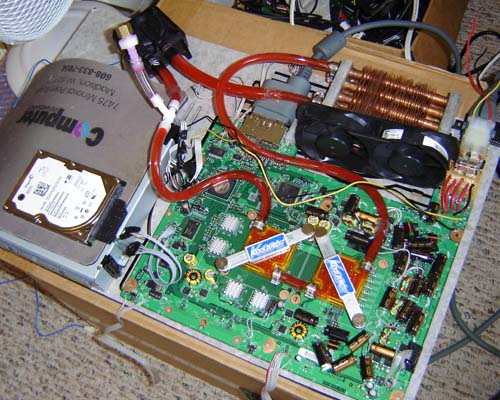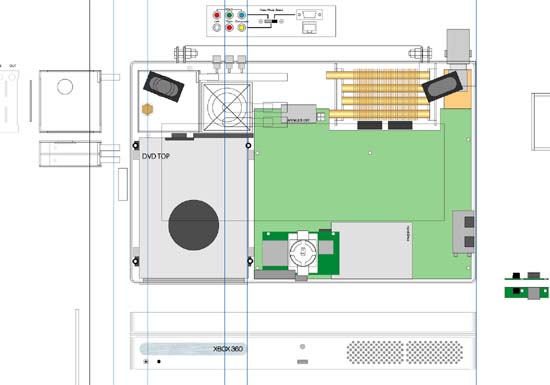|
|
|||||
Dateline: June 27th, 2006 The original plan I had for the radiator has been thrown out the window. Well, not how to make it but what size. The thing is, the size of the screen I bought increases the overall size of the case, thus, I have more room for things. The obvious benefit is a bigger radiator using larger tubing.
I am definitely one of those "why buy it when you can build it for twice the price?" kind of people, although with the exorbitant pricing of anything water-cooling related this custom radiator was probably a bargain. OK in the case I have an area of about 2.5" x 1.5" x 5.5" in which to put the radiator. Basically in the area in which the original fans sat, but twice as deep. After looking for some radiators online I realized nothing would fit that area as I pleased so I immediately jumped - much to the chagrin of the client - to the idea of making my own radiator. The controversial part of my design was the lack of bends in the copper tubing. These would take up space and increase the size of the unit, or I'd be limited to few runs of pipe. I had my heart set on 8 pipes, so the fluid has plenty of time to cool off, so the way to do this was by having hollow end sections cut from aluminum that would channel the fluid as needed to make the circuit.
42 (of course) copper fins were slid down the pipes to pull off the heat and the aluminum ends were assembled and attached to the pipes. Don't throw stones at me, but it was actually just JB Welded together! It's good to 500 degrees, and if the XBox gets THAT hot I've got other problems!
The parts were routed so accurately that everything fit very tight already and we just needed a waterproofing. During the gluing and hammering smoke was blown through the thing to find any air holes and plug them before it all dried (Remember kids - don't smoke while making your own custom radiators for Xbox 360 laptops - it's not good for you)
I used red food coloring for the 24 hour "leak test" because if it failed I wanted it to gush like a gaping wound! Well, and leave visible marks on the paper. In the background there you can sort of see the Gamecube power supply I'm using to power the pump with 12 volts - when it fires up it consumes something like 3 amps. It then settles down to a still kind of high 1.2, which I hope I can either steal off the Xbox or monitor's power supply. We'll see... Postscript: As I write this I'm in hour 7 of the test... Mike Adsit helped me hammer together the radiator, even though he insisted it would never work. I told him "Look, it's cool, all made of copper, just like the Statue of Liberty!" To which he replied "Yeah, and it'll be surrounded by water too!" Granted, pretty much everyone who saw the thing didn't think it work would so I hope to hell it does. Then I can laugh maniacally at them.
Dateline: End of June '06 It's the eleventh hour, 7th guest, bottom of the 9th. Running out of time as usual, I've got half a day to attach and test the water-cooling on the Xbox 360.
Late the night before I ripped off the original heat sinks. (This was my last chance to find the fabled "chip smashers" and lo and behold they weren't there - maybe Santa Claus stole them with help from Bigfoot) Above you can see the GPU (left) and CPU (opposite of left) exposed. They had a thick covering of heat sink paste which I spent a good hour removing with rubbing alcohol. Once I had them to a mirror finish I rubbed on Arctic Silver heat transfer compound and attached the Koolance water blocks.
With a mere 45 minutes left before I had to leave for a trip the Xbox was water-cooled. Granted these aren't the final tubing lengths and setups, but I had to see if it at least worked. I tested it for about 30 minutes, which is certainly long enough to bring the 'Box to a full boil. The radiator indeed got hot, although I was only using the stock Xbox fans to cool it. (Note there is no reservoir yet) As you can see I also attached some small heat sinks (that were included with water blocks) to the RAM. Radiator Postscript: After getting back from my trip I was able to test the Xbox longer. The radiator gets quite warm, but not as warm as say the original GPU heat sink which got so hot you wonder "is this OK?" and "maybe I could set my coffee here!" Still, in the final unit it will be bolted to the bottom of the aluminum case, draining some heat, and will also have a cover so the fans blow directly across the fins. On the flip side of that coin and enclosed case will trap more heat, so the fans will have their work cut out for them.
Dateline: Early July - 2006 Supplies
Remaining: The design is coming into its final stages. I have also decided to build a small reservoir to increase the total amount of water in the system. Granted there's not much free space left, but I believe I can add a tank that will increase the total amount of water in the system by 33%. This will also allow me to put in a easy "top off port" so the water level can be maintained if need be. (much like a car)
Above you can see my layout for the main guts of the unit (the bottom half of the case) Things are a bit tight in places, not so bad in others, but it should all work out in the end. There's not much left to do now but finalize the case design and get the drawings ready to be cut. This is probably my most "hybrid" case ever as it will use carbide bit routed aluminum and laser cut plastic parts. Then of course there's the troubleshoot, but, bleh, let's get the case done first. Time for a case... Let's
go for it!
|
|||||

